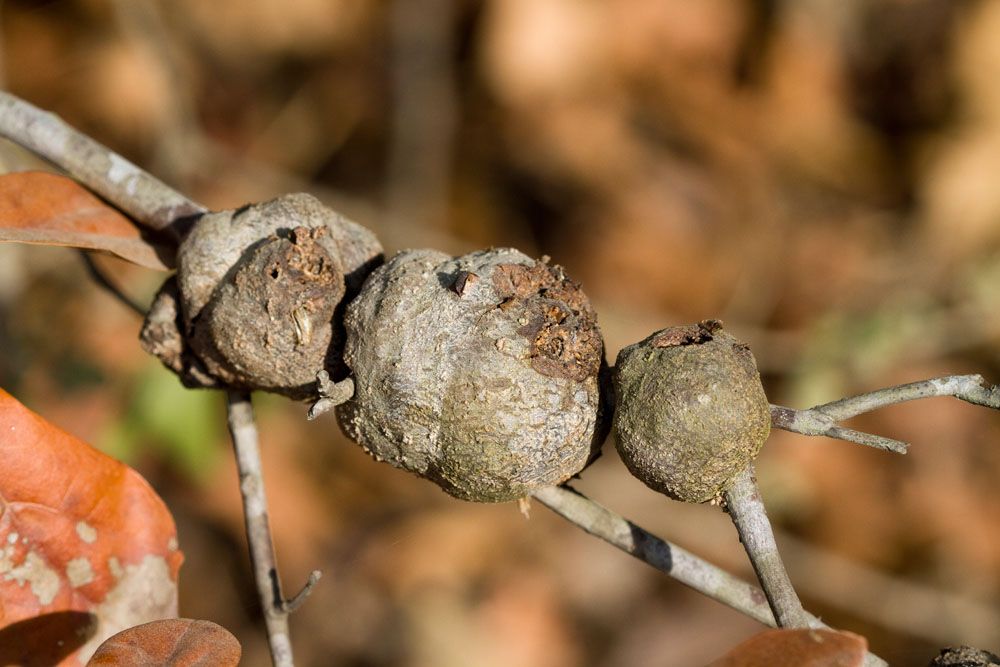
Gouty Oak Gall – Callirhtis quercuspunctata
Gouty Oak Gall (Callirhtis quercuspunctata)
Latin Name: Callirhtis quercuspunctata
Common Name: Gouty Oak Gall, Oak Knot Gall Wasp
Appearance:
- Callirhytis quercuspunctata, the gouty oak gall wasp, develops in the branches of pin, scarlet, red, and black oaks. These woody twig galls on oak are similar in appearance, but the horned oak gall has little horns protruding from the gall’s perimeter. Each of these horns produces one adult gall wasp.
- Individual twig galls mature into huge compound galls of more than 5 cm in diameter and up to 20 cm in length.
- Young galls are periderm tissue swellings that look like tumors. The bark of immature galls has a greenish-brown tint, with smooth surfaces save for projecting lenticels.
- Female body reddish-brown; abdomen considerably deeper than long, brownish-black on dorsum, oviposition protruding at a 45-degree angle; wings yellowish; approximately 2 mm long
Hosts plants:
Gall wasps target various oak species, although horned wasps prefer pin, scrub, blackjack, and water oaks, and gouty wasps prefer pin, scarlet, red, and black oaks.
Damage insect caused by Gouty Oak Gall:
Horned oak galls have small, horn-shaped protrusions on the surface. A few can cause leaves to drop excessively or distort them, disrupting photosynthesis (the plant’s food production). Homeowners often dislike galls due to their ugly appearance.
Description of Sap Suckers:
Sapsuckers are a species of woodpecker found in North America. Sapsucker wells are immediately identifiable. With its chisel-like beak, the bird drills a dozen or more tiny holes in a horizontal line, each less than half an inch apart. Then it returns to suck up the sap that has trickled out again. The bird produces the second row of holes slightly above the first when the flow begins to wane, generally after a few days. A sapsucker at work is identified by a rectangular pattern of nicely spaced holes in tree bark. The yellow-bellied sapsucker is the most common. It lives in Canada’s and Alaska’s frigid evergreen woods. It migrates east of the Rockies and spends the winter in the Southeast United States.
Life history and habitat:
In May and June, adult horned oak gall wasps emerge to lay eggs on the principal veins of oak leaves. The larvae that arise from oblong, blister-like galls in the veins. In July, adult wasps emerge from the galls, mate, and deposit their eggs in young oak twigs. Twig galls start as minute brown marbles on the twig, then grow into roundish brown galls up to 2 inches in diameter. These enormous galls might take two or more years to develop. The mature wasps emerge via 1/8-inch-long horns that cover the galls. The life cycle of the gouty oak gall appears to be similar, except the gall lacks horns and mature wasps emerge via 1/16-inch pores in the gall’s side.
